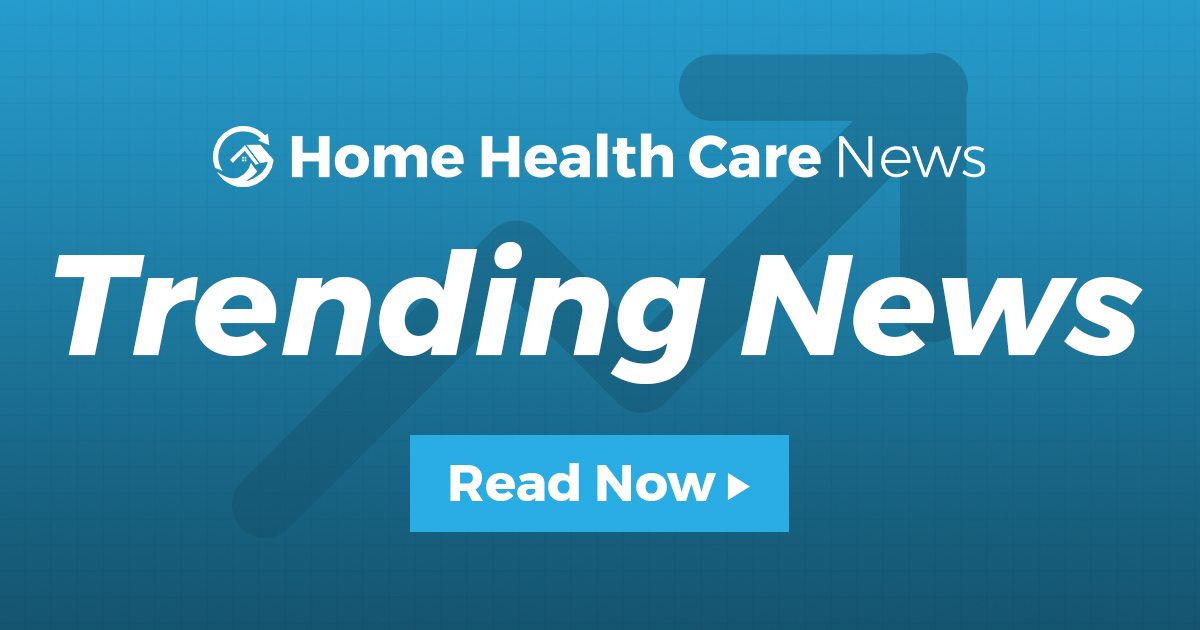
Signify Health’s (NYSE: SGFY) home- and community-services segment continues to drive growth for the company, which went public with an over $7 billion valuation in February.
Signify is not a home-based care entity in a traditional sense, but its success in the home is a reflection of the larger trends sweeping the health care sector.
“We’re off to a great start in 2021 with two highly complementary segments, each an industry leader for the respective services,” Kyle Armbrester, the CEO of Signify Health, said on the company’s Q1 earnings call Wednesday.
The core of the Dallas-based company’s model is twofold.
On one end, it strives to improve patient outcomes by sending clinicians into patients’ homes. The goal of those visits: to better assess patients’ needs and provide support so they can enjoy “happy and healthy days at home.”
On the other, it reduces costs for insurers, employers and health systems. It does that with its data analytics software and through a contracted network of health care providers. Most of the money in its home- and community-services segment is derived from Medicare Advantage (MA) and managed Medicaid .
“Our two businesses are highly complementary, as we sit between payers and providers to help our customers measure, understand and manage risk,” Armbrester said. “These health plans rely on our nationwide network of over 9,000 clinicians to reach their enrolled members in their home.”
Its physicians, nurse practitioners and physician assistants provide clinical evaluations, diagnostic tests, pharmaceutical assessments and support for clinical trials in the home.
In Q1 2021, Signify’s home- and community-services segment pulled in $152.4 million in revenue, a nearly 48% increase compared to $103.1 million over the same period in 2020. Overall, the company’s revenue totaled $180 million in Q1, an over 36% increase compared to $131.7 million in Q1 2020.
“We were really excited with where we came in at,” Steve Senneff, the president and chief financial and administrative officer for Signify, said on the earnings call. “The home- and community-services segment hit another all-time record in revenue this quarter after coming off of Q4 with an all-time record. So it really sets us up well going forward. … We feel bullish about the trends.”
While Signify Health is not a home health agency — it is more of a convener — it does activate and rely on the home as a key site in the care continuum.
“Conveners,” as they’re often called, are becoming increasingly present in the home-based care landscape.
“CMS rules require that credentialed providers, such as those in our network, perform these in-home evaluations or assessments that may identify the need for a home health agency or a home care agency. But that is not a role we seek to fill,” Armbrester said. “The agencies are key partners of ours that have a completely different role to play on the care continuum.”
The savings that Signify generates are, however, eventually distributed to both the providers and the health plans.
It’s very comfortable being a risk-bearing entity, and that’s why the company is bullish on Centers for Medicare & Medicaid Services (CMS) initiatives like direct contracting. Signify generally believes that upcoming legislation from CMS will aid its growth.
Signify is likewise bullish on bundled-payment programs.
“Based on statements from CMS, we believe that bundled payments will become mandatory, which would move more spending into bundled payments and create a significant growth opportunity for Signify,” Armbrester said. “CMS is also rolling out other innovative programs, such as direct contracting, which we are well positioned to serve.”
Broadly, under various bundled payment programs, organizations enter into payment arrangements that include both financial and performance measures for episodes of care. The goal is to increase quality of care while lowering the cost for Medicare.
On the direct-contracting side, Signify is not one of the current 53 participants in the Global and Professional Model, which is a Center for Medicare & Medicaid Innovation (CMMI) creation. Those participants began direct contracting with the federal government on April 1, but Signify sees it as a massive future opportunity.
It even recently posted a job opportunity with the title of “vice president, direct contracting.”
“We’re in talks with a lot of the current participants in direct contracting, to help them out inside the homes,” Armbrester said. “And so we’re bullish in general on value-based care, as this administration and CMMI have also been pretty public about stating, and we’re super excited to be one of their largest partners nationwide, helping to deliver innovation and insights to keep driving this momentum forward.”
Direct contracting would allow Signify to expand its services to traditional Medicare beneficiaries, beyond its traditional Medicaid and Medicare Advantage partners.
"direct" - Google News
May 13, 2021 at 04:01AM
https://ift.tt/2QcZQcH
Signify Hopes to Expand Network Through Direct Contracting, Bundled Payments - Home Health Care News
"direct" - Google News
https://ift.tt/2zVRL3T
https://ift.tt/2VUOqKG
Direct
Bagikan Berita Ini
















0 Response to "Signify Hopes to Expand Network Through Direct Contracting, Bundled Payments - Home Health Care News"
Post a Comment